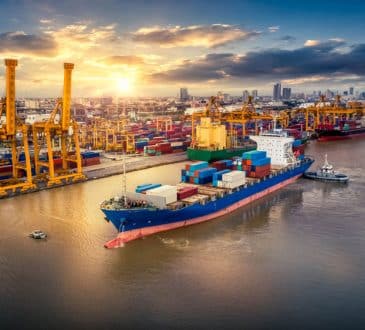Toward a Sustainable Streaming Industry: Dan Goman’s Perspective

Streaming is now the default way billions of people around the world access entertainment, replacing cable TV and physical media with an endless buffet of on-demand content. As global OTT video subscriptions head toward an estimated 2 billion by 2028, the industry’s strategy has historically revolved around scaling fast to keep up with consumer demand. The speed at which streaming has become a worldwide phenomenon has left little room for reflection as platforms have prioritized expanding content libraries, and raced to penetrate new markets, fueled by fierce competition for market share and cultural dominance.
The result has been an industry balancing immense potential with the challenges of rapid expansion, laser-focused on delivering more content, faster and more personalized than ever before. However, as streaming platforms race to provide the next big innovation—4K and 8K video, virtual reality experiences, interactive programming—they are running headlong into the problem of sustainability.
Streaming is responsible for 3-4% of the global carbon footprint, which is comparable to the aviation industry. Behind every instant stream, there is a network of energy-intensive processes powering its seamless experience. Data centers storing terabytes of video content and consumer devices running non-stop are just a few of the ways the industry’s carbon footprint has grown almost as fast as audience demand, pushing the limits of what the current infrastructure can support without significant environmental consequences.
Leaders across nearly every sector should be acutely aware of the growing urgency surrounding sustainability. It has become a central pillar of corporate strategy, necessary to staying competitive amidst consumer expectations, investor demands, and evolving regulatory frameworks. Streaming is no exception to this rule, and an industry that reshaped global entertainment in the span of two decades must now consider how to adapt its operational models to align continued innovation with sustainable practices.
Dan Goman, CEO of the cloud-native media supply chain company, Ateliere Creative Technologies, emphasizes that leaders in the industry should see sustainability as an opportunity to innovate. Ateliere’s solutions, such as Ateliere Connect and FrameDNA™, leverage advanced cloud infrastructure and AI-driven tools to streamline media supply chains, eliminate redundancies, and enhance efficiency—all while minimizing the environmental impact of traditional workflows. An industry outsider who built his career in software and technology before founding Ateliere, Dan Goman highlights that the entertainment industry as a whole has historically been resistant to change, and the next decade presents an opportunity for streaming to shake the stagnation of its predecessors.
Key Challenges in Decarbonizing Media
The streaming industry, like most modern sectors, is built on a foundation of complexity: the sprawling supply chain and high-tech infrastructures that made global streaming possible are also its greatest barriers to decarbonization. Because these systems are deeply integrated into the industry’s framework, overcoming their challenges requires a fundamental and systemic shift.
Goman points to the persistence of operational silos as one of the biggest obstacles. Media workflows are often fragmented, with production, post-production, distribution, and storage managed by different teams using disparate systems. The lack of integration between these systems not only slows operations, but also makes it nearly impossible to track energy use and emissions comprehensively. Redundant storage of the same piece of content across multiple servers—a common occurrence in legacy systems—creates unnecessary energy consumption, and without centralized solutions even the most well-intentioned sustainability efforts are doomed to remain piecemeal.
Much of the media industry also relies on outdated hardware and workflows designed for a pre-streaming era. This legacy infrastructure wasn’t built with energy efficiency in mind, and retrofitting them to meet modern sustainability goals can be both costly and technically daunting. The question of whether the systems should be patched up or replaced entirely is highly complex, fraught with financial and operational trade-offs.
Compounding these challenges is the relentless growth in consumer demand. The demand for high-definition formats, immersive virtual reality experiences, and an endless stream of content has exponentially increased the volume of data flowing through the system. Additionally, the globalization of these services has meant that as new markets come online—particularly in regions with underdeveloped energy infrastructure—the strain on the system will only intensify.
Strategic Implications for Studios and Distributors
Sustainability in the streaming industry is as much a strategic opportunity as it is an operational challenge. The writing is on the wall that consumers and investors alike are increasingly prioritizing ESG metrics, and streaming platforms must align their growth strategies with these values.
Most major streaming platforms now operate as both studios and distributors, and many are integrating sustainable production practices to meet evolving consumer and industry expectations. Virtual production stages allow filmmakers to create immersive environments without the need for extensive travel, physical sets, or resource-heavy shoots. These technologies, popularized by high-profile productions such as The Mandalorian, significantly reduce the carbon footprint of production while also offering greater creative flexibility. Remote collaboration tools such as Ateliere Connect further enhance this shift, enabling teams to work together seamlessly from different locations and eliminating the need for energy-intensive travel.
Cloud-native solutions, such as Dan Goman’s Ateliere Connect platform, offer companies a powerful tool to improve workflow management during the post-production and distribution process. The platform allows companies to fully centralize their operations, gaining real-time visibility into their content libraries and moving away from traditional, siloed systems. Tools like Ateliere’s FrameDNA™, which uses AI to identify and remove redundant data, further drive operational efficiency while also significantly cutting emissions. Reducing costs is another key benefit—platforms with extensive content catalogs often encounter escalating storage expenses, but these systems can lower cloud storage costs by as much as 90%
Distribution can also adapt eco-friendly content delivery methods while still expanding their reach to new audiences. Adaptive streaming technologies that adjust the quality of content based on network conditions have the ability to help minimize bandwidth usage and energy consumption without sacrificing user experience. Goman highlights how his company has chosen to work with AWS, which has made the significant commitment to powering operations with 100% renewable energy by 2025.
Reshaping Streaming Operations
Historically, the media industry has lagged in innovation, but streaming offers the chance to change that narrative, with the potential to lead technological and cultural advancements across industries. Its rapid expansion has reshaped consumer expectations and forced adjacent industries to evolve, and sustainability has shifted from a constraint to a powerful strategic lever for businesses.
Adopting sustainability practices at scale goes further than compliance. It presents a way to unlock operational efficiencies and drive the technological innovation this industry desperately needs to embrace. The ripple effects of these innovations could extend far beyond streaming, as lessons in leveraging AI, reducing storage costs, and implementing scalable cloud-native solutions can be applied to industries like logistics, manufacturing, and retail. Goman asserts that sustainability can be the crucial puzzle piece that leads to more innovation in the sector, propelling it out of its legacy-driven and siloed past.
Have you read?
Countries with the most gold reserves.
World’s Best Public Relations Agencies (Top PR Firms).
Countries with the highest human freedom.
World’s Safest & Most Dangerous Countries For Travelers.
Bring the best of the CEOWORLD magazine's global journalism to audiences in the United States and around the world. - Add CEOWORLD magazine to your Google News feed.
Follow CEOWORLD magazine headlines on: Google News, LinkedIn, Twitter, and Facebook.
Copyright 2025 The CEOWORLD magazine. All rights reserved. This material (and any extract from it) must not be copied, redistributed or placed on any website, without CEOWORLD magazine' prior written consent. For media queries, please contact: info@ceoworld.biz








